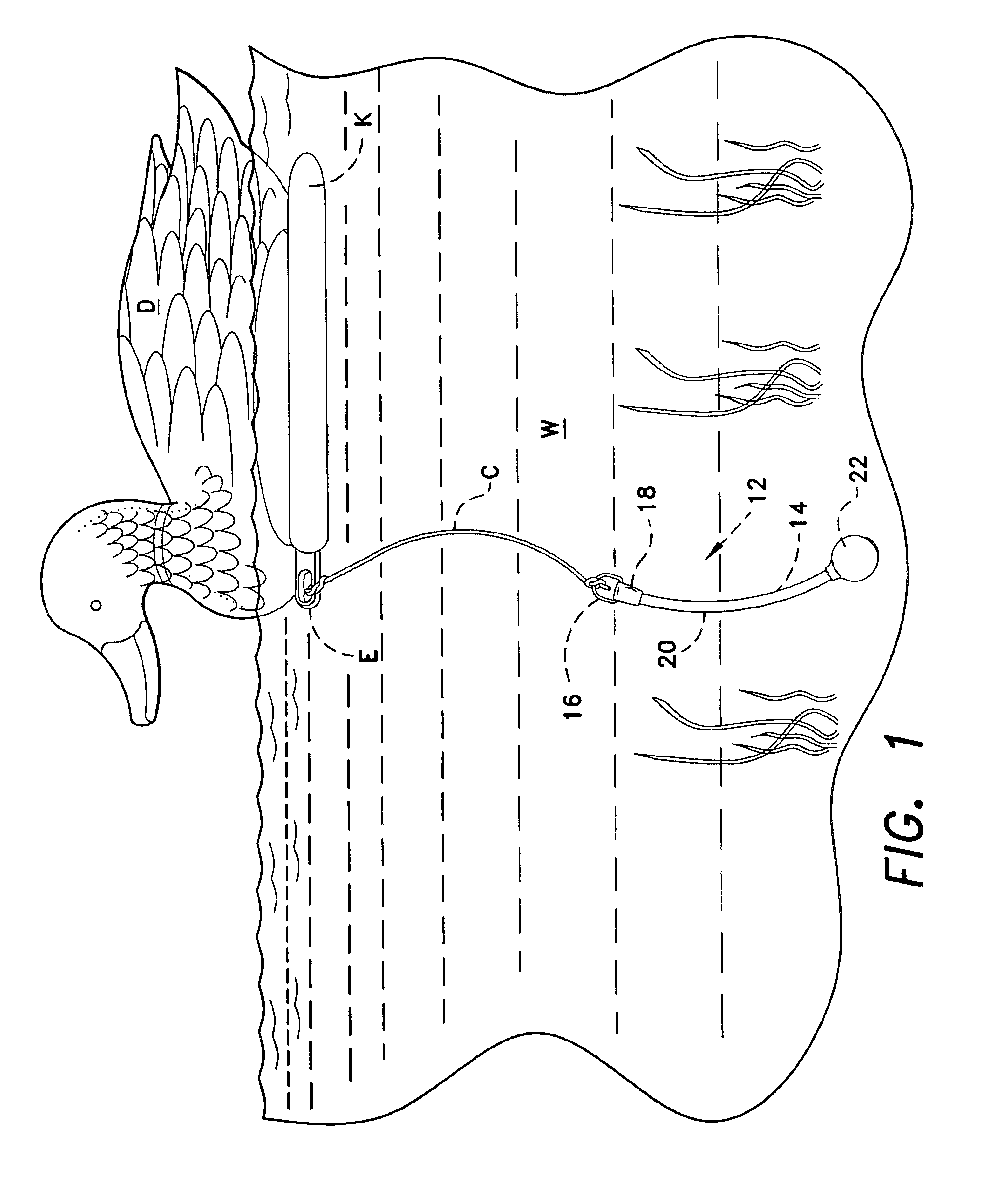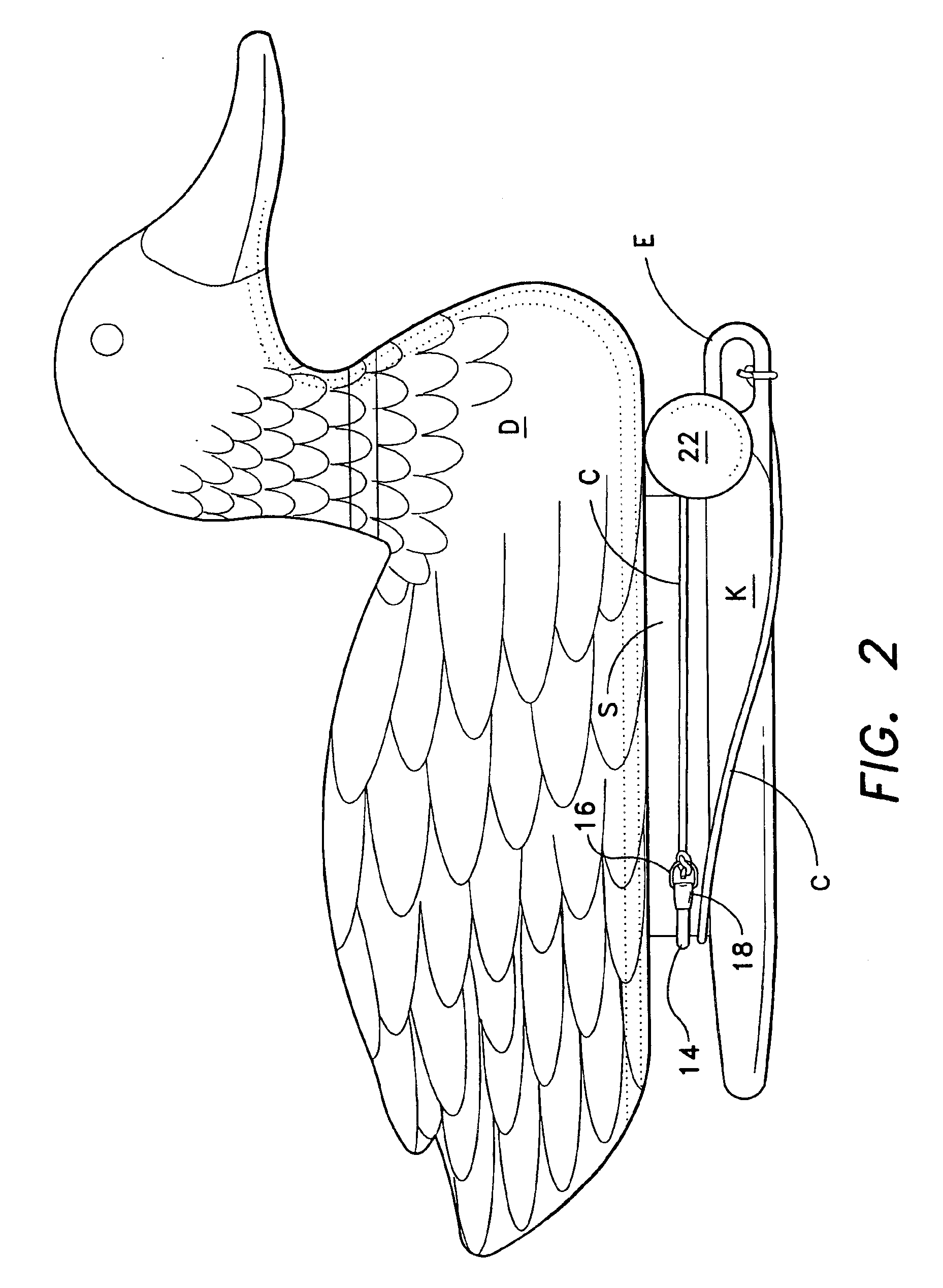Decoy anchor
a technology of decoy anchors and anchors, applied in the field of decoy anchors, can solve the problems of affecting the appearance of the anchor, the anchor is easy to be snagged, and the anchor is subject to corrosion. it is easy to stor
- Summary
- Abstract
- Description
- Claims
- Application Information
AI Technical Summary
Benefits of technology
Problems solved by technology
Method used
Image
Examples
Embodiment Construction
The present invention is a waterfowl decoy anchor for anchoring a floating decoy in a lake or stream for attracting waterfowl to a hunting site or blind. The inventive anchor is typically tied to an eyehole in the lengthwise keel of a decoy by means of a connecting cord or line having a length chosen according to the water depth such that the anchor can rest on the bottom while the decoy floats in a natural manner. The inventive anchor includes an elastic cord segment such as a length of latex tubing which is connected at one end to a “D”-ring for attachment of the connecting cord and, at the other end, to an anchor ball of lead or other dense, heavy material such as iron or steel. The anchor ball is covered with a polymeric material to prevent contact with water, thus avoiding lead pollution and anchor ball corrosion.
Referring to FIG. 1, there is shown an environmental perspective view of the waterfowl decoy anchor system of the present invention. Decoy anchor system 10 includes a ...
PUM
 Login to View More
Login to View More Abstract
Description
Claims
Application Information
 Login to View More
Login to View More - R&D
- Intellectual Property
- Life Sciences
- Materials
- Tech Scout
- Unparalleled Data Quality
- Higher Quality Content
- 60% Fewer Hallucinations
Browse by: Latest US Patents, China's latest patents, Technical Efficacy Thesaurus, Application Domain, Technology Topic, Popular Technical Reports.
© 2025 PatSnap. All rights reserved.Legal|Privacy policy|Modern Slavery Act Transparency Statement|Sitemap|About US| Contact US: help@patsnap.com



